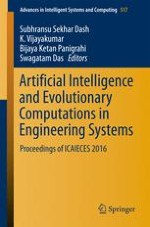The volume is a collection of high-quality peer-reviewed research papers presented in the International Conference on Artificial Intelligence and Evolutionary Computation in Engineering Systems (ICAIECES 2016) held at SRM University, Chennai, Tamilnadu, India. This conference is an international forum for industry professionals and researchers to deliberate and state their research findings, discuss the latest advancements and explore the future directions in the emerging areas of engineering and technology. The book presents original work and novel ideas, information, techniques and applications in the field of communication, computing and power technologies.
